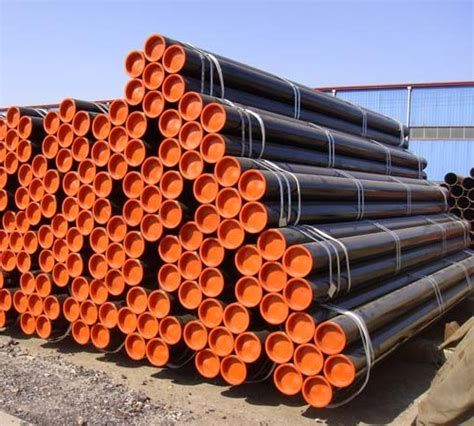
Mechanical Properties of Seamless Steel Pipe
The mechanical properties of steel is an important index to ensure the final use performance (mechanical properties) of the steel, and it depends on the chemical composition of the steel and the heat treatment system. In the seamless steel pipe standard, according to different application requirements, the tensile properties (tensile strength, yield strength or yield point, elongation), hardness and toughness indexes are specified, as well as high and low temperature properties required by users.

In the tensile process, the maximum force (Fb) that the sample bears when it breaks, and the stress (σ) obtained by the original cross-sectional area (So) of the sample is called the tensile strength (σb), and the unit is N/mm2(MPa). It represents the maximum ability of a metal material to resist damage under tensile force. The calculation formula is:
In the formula: Fb--the maximum force that the sample bears when it is broken, N (Newton); So--the original cross-sectional area of the sample, mm2.②Yield point (σs)
For a metal material with a yield phenomenon, the stress at which the sample can continue to elong without increasing the force during the stretching process (maintaining constant) is called the yield point. If the force drops, the upper and lower yield points should be distinguished. The unit of yield point is N/mm2 (MPa).
Upper Yield Point (σsu): The maximum stress before the specimen yields and the force drops for the first time; Lower Yield Point (σsl): The minimum stress in the yield stage when the initial transient effect is not taken into account.
The calculation formula of the yield point is: σs=Fs/So
In the formula: Fs--yield force (constant) during the tensile process of the sample, N (Newton) So--the original cross-sectional area of the sample, mm2.
③Elongation after breaking (σ)
In the tensile test, the percentage of the length of the gauge length increased after the sample is broken to the original gauge length is called the elongation. Expressed by σ, the unit is mm. The calculation formula is: σ=(Lh-L0)/L0*100%
In the formula: L1-the gauge length of the specimen after breaking, in mm; L0-the original gauge length of the specimen, in mm.④Reduction of area (ψ)
In the tensile test, the percentage of the maximum reduction of the cross-sectional area at the reduced diameter of the sample after the sample is broken to the original cross-sectional area is called the reduction of area. Expressed in ψ, the unit is mm2. Calculated as follows: ψ=(S0-S1)/S0*100%
In the formula: S0-the original cross-sectional area of the sample, mm2; S1-the minimum cross-sectional area at the reduced diameter after the sample is broken, mm2.
⑤ Hardness index
The ability of metal materials to resist the indentation of hard objects on the surface is called hardness. According to different test methods and scope of application, hardness can be divided into Brinell hardness, Rockwell hardness, Vickers hardness, Shore hardness, micro hardness and high temperature hardness. There are three commonly used pipes: Brinell, Rockwell, and Vickers hardness.
Tips: ASTM A53 Grade B is more popular than other grades. These pipes can be bare pipes without any coating, or it may be Hot-Dipped or Zinc-Coated and manufactured by Welding or by a Seamless manufacturing process. In Oil and Gas, A53 grade pipes are used in the structural and non-critical applications.


